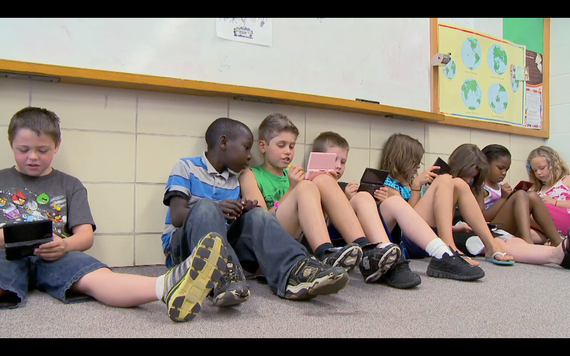In the past three years, more than a million students have experienced Expanded Learning Time (ELT) initiatives granting at least 30 additional minutes per day (and/or 10 days per year) at school.
Where ELT is being implemented thoughtfully, there is outstanding potential to improve student achievement. But merely adding instructional time isn't enough, researchers have found. Expanding time to do the usual learning activities leads to student and teacher fatigue.
That's why some ELT proponents are shifting their language to encourage "More and Better Learning Time" (MBLT). The important thing, they emphasize, is to use time in new and better ways: individualizing learning, making the most of student data, and building school cultures of high expectations and mutual accountability.
Early research suggests that when first-generation ELT initiatives had a clear plan for making better use of time, teachers were able to cover more content. Many schools built strong community partnerships that enriched student learning on subjects ranging from robotics and astronomy to drama and creative writing.
Other predictors of ELT success included 1) supporting teachers to implement new teaching strategies, and (2) getting buy-in from teachers, students, and parents. This particular factor has made reformers skittish. After all, teacher "buy-in" is no simple matter these days, given practitioners' justifiable skepticism of outside mandates.
But what if MBLT proponents and researchers began emphasizing the potential of changes driven by the ultimate "insiders," teachers themselves?
That's what I proposed--with my Center for Teaching Quality (CTQ) colleagues Barnett Berry and Lori Nazareno--in a report released earlier this spring by the National Education Association (NEA). Pointing to 35 district-wide MBLT initiatives in 10 states, we asserted that teachers unions should help their members secure a meaningful role in defining and implementing MBLT initiatives' purposes. Teachers should also co-create the policy and planning supports necessary to carry out MBLT initiatives well.
What strategies could state, district and union leaders use to put teachers more in the driver's seat? One recommendation is to draw on the experiences of those who have been participating in the Teacher Leadership Initiative (TLI), a partnership between CTQ, NEA, and the National Board for Professional Teaching Standards. Over the past two years, a significant number of TLI participants have launched bold new MBLT initiatives in their schools, districts, and unions. Their reportage and analysis has helped identify some cutting edge approaches that can help system leaders ensure MBLT initiatives' success:
1.Give teachers more decision-making flexibility in their schools
Schools where teachers and administrators have decision-making autonomy around staffing, scheduling, and budget have fewer MBLT implementation challenges. Some districts and unions are already showing how to do this, having arranged autonomy agreements for teacher-powered schools that are designed and run collaboratively by groups of teachers. Teachers who work in these schools have consistently demonstrated that, when they call the shots, they already use time in new and better ways for student-centered learning (no formal MBLT initiative required).
2.Create hybrid roles for teachers
Schools with MBLT initiatives could have hybrid roles for one or two teachers to work part-time as MBLT coordinators and part-time in the classroom. These coordinators would be responsible for supporting their colleagues to implement new teaching strategies. They could also develop strong community partnerships to provide enrichment activities that reinforce the learning goals of their school and district.
3.Develop relevant professional learning communities (PLCs) that are led by teachers
Teachers are generally very dissatisfied with their professional development--including their PLC participation-- because of top-down execution. But teachers who are introducing MBLT initiatives say they are profoundly impacted by PLCs that connect them with colleagues to share and troubleshoot their challenges. In these kinds of PLCs--some of which are conducted virtually and may bridge multiple schools--teachers learn to anticipate and resolve complications connected with MBLT reforms, such as navigating the power dynamics that exist in school systems.
To yield meaningful outcomes for students, MBLT initiatives must involve more than passing a new state law or approving a lengthened school day across a school district. Education leaders must find and use creative opportunities to position teachers as experts and decision makers in how to best use the time for high-quality teaching and learning. Otherwise, MBLT will join the graveyard of failed reforms: good ideas that flopped when implemented without practitioners' expertise.
